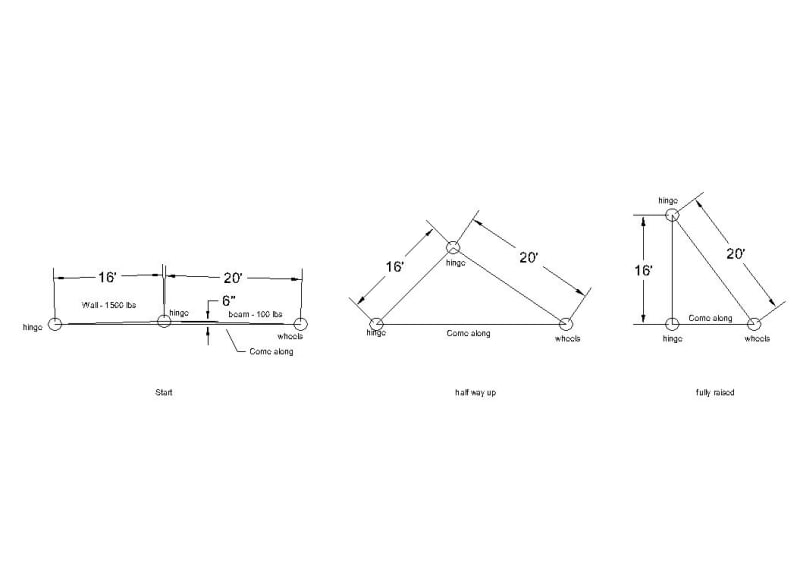xtal01
Mechanical
- Mar 15, 2012
- 143
OK ... I have a friend who is about to try raising a wall ... his idea worries me (a lot).
He figures he will more or less build half a scissor jack.
I looked at his idea and I think the tension in the member that brings it together will be amazingly high.
I am a machinist and don't know how to calculate the tension in the lifting member.
I tried to draw it. He has a 16 ft wall section ... about 1500 lbs.
One end is hinged.
He wants to put a beam hinged at the top of the all and a come along between the bottom of the wall and the bottom of the beam.
The bottom of the beam will have wheels.
We know the most tension (force) will be when he wall is almost flat. He will lift the wall a few inches just to get it started.
I was not sure if this all makes sense for I drew it with the wall in three positions .. just starting ... half way up .. up.
Can you tell me how much force will be needed to lift the wall? He is thinking of using a 2000 lb come along. I don't know if it would be enough.
Thanks .... Mike

He figures he will more or less build half a scissor jack.
I looked at his idea and I think the tension in the member that brings it together will be amazingly high.
I am a machinist and don't know how to calculate the tension in the lifting member.
I tried to draw it. He has a 16 ft wall section ... about 1500 lbs.
One end is hinged.
He wants to put a beam hinged at the top of the all and a come along between the bottom of the wall and the bottom of the beam.
The bottom of the beam will have wheels.
We know the most tension (force) will be when he wall is almost flat. He will lift the wall a few inches just to get it started.
I was not sure if this all makes sense for I drew it with the wall in three positions .. just starting ... half way up .. up.
Can you tell me how much force will be needed to lift the wall? He is thinking of using a 2000 lb come along. I don't know if it would be enough.
Thanks .... Mike

